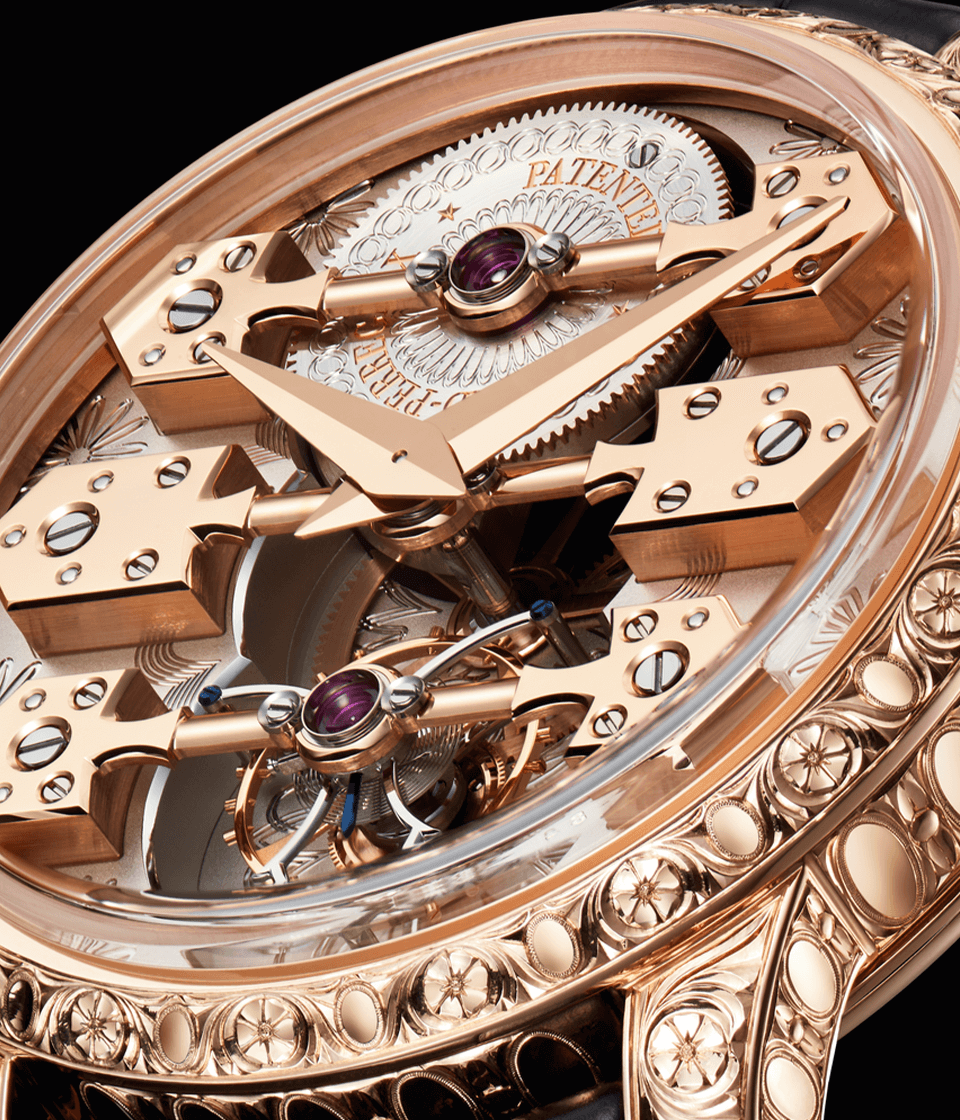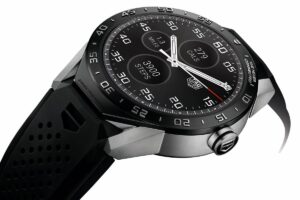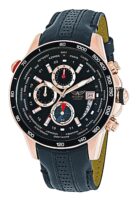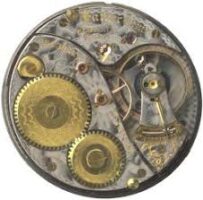












In 1791
Jean-François Butte began crafting high-end timepieces.
In 1852
when Constant Girard founded the company Girard & Campagnie.
In 1856
He marry Marie Perregaux, a member of an established family of watchmakers from Le Locle. The respective surnames of the couple were combined to form Manufacture Girard-Perregaux, This name lives on to this day.
In 1860
Girard created a pocket watch equipped with a tourbillon and three parallel bridges which received a first class award from the Observatory of the Canton of Neuchâtel.
In 1883
the styling of the bridges arrow like tips featured on the three bridges for the first time. This design was later patented in the United States. The shape of the three golden bridges has remained relatively consistent since this period, becoming part of the Girard-Perregaux paradigm.
In 1966
Girard-Perregaux released its first high frequency movement. The balance wheel oscillated to and fro at 36,000 vibrations per hour (5 Hz). The increased frequency of the movement conferred greater accuracy.
In recognition of the research and development undertaken by Girard-Perregaux, the Administrative Council of Neuchâtel chose to recognise its achievements by awarding the Observatory Centenary Prize
collection of recent years has included chronographs, dual-time watches and full-calendar timepieces. Irrespective of the model selected, each watch exhibits a tasteful quotient of style.
In 1970
A famous pocket watch created by Constant Girard was “La Esmeralda”. Arguably the most celebrated timepiece he was responsible for, it bore his monogram and an enamel dial. The watch is said to have been given to the President of Mexico
In 2011
The Swiss holding group of Girard-Perregaux, Sowind Group, has been a subsidiary of the French luxury group Kering. Headquartered in La Chaux-de-Fonds, Switzerland, the company opened the Girard-Perregaux Museum near its headquarters in Villa Marguerite in 1999
In 2013
The Girard-Perregaux scooped further silverware with its ingenious Constant Escapement L.M. The watch won the GPHG, Grand Prix D’ Horlogerie de Geneva, “Aiguille d’Or”, the most coveted prize in the watchmaking field.
In 2014
the Swiss brand adapted the three bridge design for a modern audience, releasing the Neo-Tourbillon with Three Bridges. In this instance, the bridges were made of titanium, sandblasted and treated with black PVD, evincing a contemporary air.
Please remember that this is an unofficial account of the history of this
company, Should you happen to find any mistakes with our information then
please let us know at



